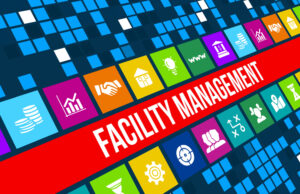
Data-driven facility management revolutionizes efficiency and cost savings and can lead to significant performance improvements. That, in turn, positions facilities management as a vital strategic asset.
Gone are the days of facilities management solely focusing on maintenance. In today’s cost-conscious environment, it’s become a strategic weapon for businesses. This transformation hinges on data-driven decision-making, where facilities managers leverage valuable insights to reduce operational expenses, enhance customer service, and directly impact the bottom line. Dive deeper with us as we explore the power of data in revolutionizing facility management.
The Evolving Role of Facilities Management and Analysis Paralysis
1) Current Condition Data
Building effective asset data strategies begins with having accurate information about a building’s assets. This includes details like asset type, age, maintenance history, and their importance to the building’s operations. Gathering data on asset conditions across a property portfolio is the first and most essential step in developing any data strategy.
The importance of acquiring accurate asset data cannot be overstated in terms of future planning and decision-making. Having this foundational data opens up opportunities to enhance it further by including expenditure data, Computer-Aided Facilities Management (CAFM) history, and comparing it with similar assets. Utilizing this data to establish FCIs, for instance, improves current condition data to provide a more comprehensive strategic outlook.
2) Asset Lifecycle Data
When it comes to facility asset management, property assets like air handling units, boilers, chillers, and lighting are often looked at individually based on immediate business needs. For instance, decisions about optimizing a portfolio might only consider recent building occupancy data. However, it’s crucial to consider a wider range of data to ensure that overall costs over time match up with occupancy and usage requirements.
This approach helps property managers make better decisions by considering all operational and cost factors. It also establishes a data collection system that can be adjusted as objectives change. When used effectively, data on asset lifecycles should inform future capital expenditure planning and support efforts to reduce carbon emissions in line with an organization’s long-term net-zero objectives.
3) Utilities – Energy, Water, and Electricity
ESG (Environmental, Social, and Governance) considerations are becoming increasingly important for businesses across different industries. With ongoing uncertainty surrounding energy costs, having accurate and detailed consumption data is crucial for supporting Facility Management (FM) decisions and larger business strategies.
Establishing utilities and energy data involves various steps, such as consolidating existing half-hourly energy readings, improving sub-metering strategies to track consumption by area or floor, and using building analytics tools. There are several solutions available to enhance this dataset, including real-time analysis with consumption alerts. However, the choice of implementation depends on specific goals and objectives.
A solid data strategy helps in understanding how and where energy is used within buildings or groups of buildings. This allows FM teams to assess the correlation between energy use and building usage, occupancy, and asset operational efficiency, promoting more efficient energy usage in line with decarbonization targets.
As businesses are asked to report emissions more extensively, it’s important to have a solid plan for managing building data. This means thinking about current ESG reporting needs and also preparing for what might be needed in the future.
4) Proactive Maintenance and Smart Resource Distribution
Using data allows for proactive maintenance strategies. For instance, in a manufacturing setting, sensors continuously monitor the condition of machinery components. Through the analysis of data such as vibration, temperature, and pressure, facility managers can anticipate potential failures. This foresight enables timely replacement of parts before breakdowns occur, thereby reducing costly downtime and mitigating production interruptions.
5) Data Analysis and Insights
Effective data analysis transforms raw data into valuable insights. For example, within a university campus, Wi-Fi access points gather data on device connections and user movements. Through thorough analysis, facility managers can identify peak periods of activity across various buildings. This knowledge empowers them to schedule cleaning and maintenance tasks during less busy times, minimizing disruptions to students and faculty members alike.
6) Cost Control Through Dynamic Prediction
Planning for significant expenses like replacing or refurbishing building equipment requires careful foresight and budgeting. Allocating funds for these needs should be done well in advance. A Forward Maintenance Register (FMR) can help assess asset risk, prioritize needs, and forecast future expenditures.
For many organizations, using an enhanced data strategy is essential for gaining insights and informing decisions about future expenses. This strategic approach also helps identify risks and prioritize spending.
Alongside maintaining a robust FMR, there’s an opportunity to forecast spending patterns dynamically. By collecting data that tracks changes in plant operations and usage, organizations can predict asset lifespans based on evolving building occupancy dynamics. The focus isn’t just on data collection methods but also on using tools that can analyze data effectively to anticipate future outcomes. Cutting-edge tools that streamline and automate this process represent the forefront of data-driven decision-making in facility management.
7) Showing Return on Investment (ROI) and Performance Improvements
Using data to make decisions leads to clear results. For instance, in a commercial building, smart lighting systems are installed to adjust brightness depending on how many people are around. Once these systems are in place, we compare how much energy is used compared to the previous year. We find out there’s a 15% decrease in energy costs, proving that using data to manage lighting saves money and works well.
A Final Word
Data-driven facilities management revolutionizes efficiency and cost savings. Accurate asset data and lifecycle analysis improve planning and budgeting. Detailed energy metrics drive sustainability, while proactive maintenance minimizes downtime and expenses. Converting raw data into actionable insights optimizes operations, and predictive models streamline forecasting. Embracing these strategies leads to significant performance improvements and positions facilities management as a vital strategic asset.




























